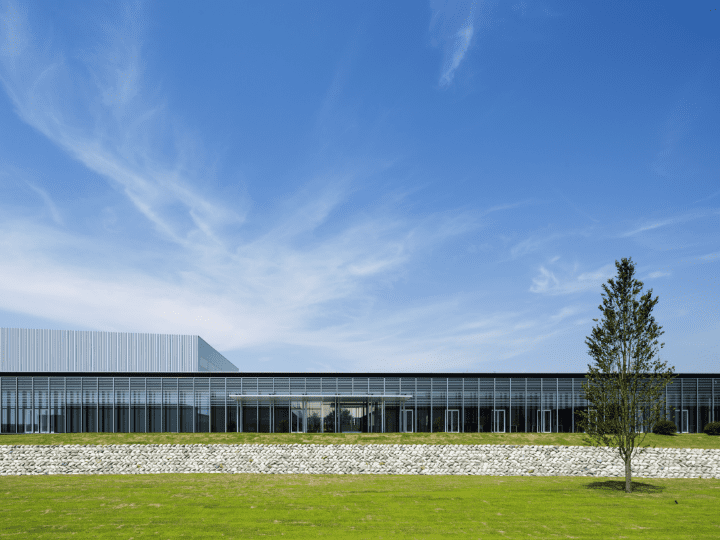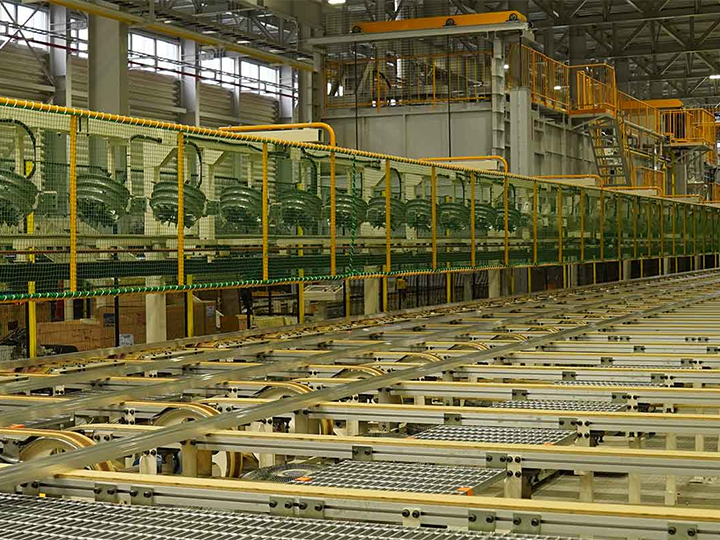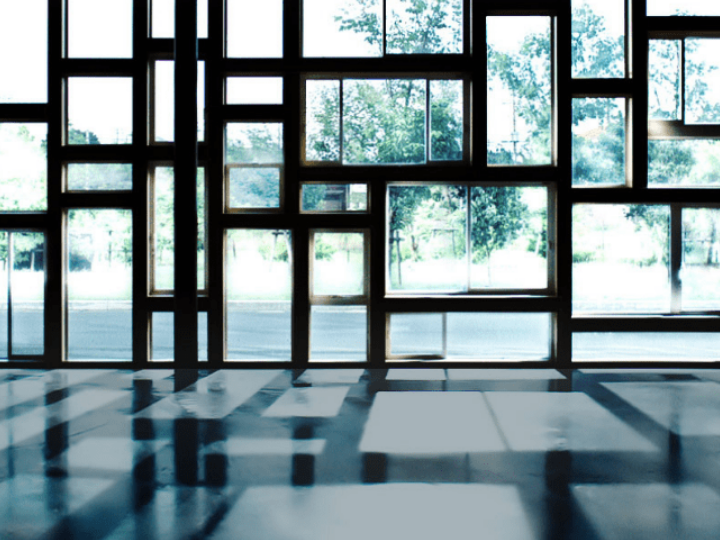
Creating warm houses that don't rely on heating and cooling. The reason YKK AP is working to popularize energy-efficient “vinyl windows” with high thermal insulation.
The purpose of window manufacturer YKK AP is "We Build a Better Society Through Architectural Products," and we are striving to popularize vinyl windows with high thermal insulation performance that contribute to the creation of houses that ensure health and comfort, and lead to energy efficiency, saving electricity, and reducing energy costs.
Recently, high thermal insulation performance in homes has attracted attention with the sudden jump in energy costs, work toward carbon neutrality, and requests for electricity saving due to power supply difficulties. Recognition of vinyl windows is spreading with this, but there has been a bottleneck: vinyl windows are more expensive than conventional aluminum windows... We have therefore devised strategies for this, including the introduction of "optimal window usage," which conveys the advantages of vinyl windows and increases thermal insulation performance while limiting costs, even if only a little. For this article, we spoke to Hajime Ishikawa, head of Window Business Development Department, Residential Business Division, about the history and struggles associated with vinyl window sales, and his feelings toward expanding sales.
The market environment surrounding homes
The strain of the global situation in recent years has had effects such as a sudden jump in materials and energy prices, and significant changes have occurred in the market environment surrounding homes. There has been a steep rise in the cost of home construction, with bewilderment not only from professional users such as contractors and builders but also from the end users who are purchasing these homes.
Meanwhile, national energy-efficiency measures*1 and support programs*2 such as subsidies for homes with high airtightness and high thermal insulation are accelerating so we can realize carbon neutrality/a decarbonized society; interest in increased energy efficiency and higher thermal insulation performance in private homes has grown larger than ever.
Windows are important for increased energy efficiency and higher thermal insulation performance in homes
In fact, windows are the greatest source of heat and coldness in homes. In the case of the aluminum windows used in approximately 70% of existing homes, around 68% of summer heat flows in through the windows, and around 50% of the heat in houses flows out through the windows in winter. Consequently, it is vital to consider the performance of windows, responsible for the greatest inflow and outflow of heat, when creating homes with high airtightness and high thermal insulation that limit energy consumption.
Simply reducing the number of windows or making them smaller would work to increase thermal insulation performance, but views and lighting are important for comfortable living, so there is also a need for large windows.
So using vinyl windows made from vinyl materials that make it hard for heat to pass through the frame, or using low-E insulating glass, which is coated with a metallic film, enables people to increase the effectiveness of their heating and cooling while limiting the flow of heat in and out of the window, creating energy-efficient homes with high thermal insulation.

With alminum windows (Insulating glass)
Summer : 14:00-15:00 August 20 (Day with highest average outside daily temperture) Tokyo
Winter : 5:00-6:00 January 15 (Day with lowest average outside daily temperture) Tokyo
*Calculatd by YKK AP (updated in July 2025)
Initiatives to popularize YKK AP's vinyl windows
Launching all-Japan sales of vinyl windows in 2010
YKK AP started producing and selling vinyl windows in 1982 as products for Hokkaido and the northern Tohoku region. After this, we developed the "APW 330" vinyl window, hoping to popularize these across Japan, and started sales around the country in 2010. Then, we developed the "APW" vinyl window series, types of windows that correspond to purposes.
During initial development, lots of people had doubts, even within the company: "Are high thermal insulation windows necessary outside of cold regions?" "Will they really sell?"
We finally launched the "APW 330," but people's awareness of vinyl windows was low outside of cold regions, so at the time we struggled a lot, and didn't really convey the advantages or necessity of vinyl windows. Professional users said things like, "Aren't these products for snowy areas?", "These aren't needed in the Tokyo metropolitan area," and "Even if they're the same price as aluminum windows, I don't understand why we'd use them." People did not understand the value of vinyl windows.
The trend changed with the 2011 Tohoku Earthquake. This caused long-lasting power cuts, especially in the areas struck by the quake, and while the room temperatures in homes with high thermal insulation did not drop significantly, temporary accommodations with low thermal insulation suffered from the cold and condensation. When information about this situation spread, it led to an increased interest in thermal insulation performance in homes across the country.

(Left) Vinyl window "APW 330" (Right) Saitama MADO (Window) Plant
Strengthening “vinyl window” promotion and developing manufacturing and supply systems
Vinyl windows have lots of advantages for users—they don't just boast high thermal insulation performance and limit condensation, they also have an energy-saving effect and are good for the health. We rode the wave of interest in homes with high thermal insulation, holding forums and seminars to inform professional users such as contractors and builders of their value in order to let people know the advantages of vinyl windows so they would become popular across the country. At the same time, we increased our product variations for vinyl windows, expanded our production lines and operated plants dedicated to windows in six locations across the country, as well as developing a supply system; in 2011, the number of vinyl windows sold made up 7% of all the windows we shipped, and in a decade this rose to 31%.

How to limit the cost burden of having high thermal insulation windows?
However, here we hit a problem. If you choose vinyl windows, the price will be at least 1.5 times that of aluminum windows. The dilemma: we want to propose windows with high thermal insulation performance so people can have a comfortable home that is cool in summer and warm in winter, but the burden of the cost is on the customer...
And so, 10 years ago, we summarized optimal ways of using windows as the "window arrangement technique," enhancing our external designs through the four methods of decreasing, arranging, consolidating, and changing windows while proposing a method for professional users that limits the cost burden and aims for high thermal insulation performance for homes.
It may seem like a contradiction for a window manufacturer to propose reducing the number of windows and using inexpensive windows, but to ensure that the actual residents have homes in which they can live comfortably, it is vital that we consider the overall performance of the home and usability rather than thinking in terms of window units. We focused on the desire to have people adopt high thermal insulation windows with as little price difference as possible so as many people as possible can experience the comfort of a house with high thermal insulation.

What is the “window arrangement technique” that promotes high thermal insulation performance for homes as a whole and also limits costs?
Simply ensuring that all windows are vinyl windows increases the cost, but by optimizing the number, type, and positioning of windows it is possible to increase the thermal insulation performance of the home as a whole while limiting costs, and reducing heating and cooling costs.
So the "window arrangement technique" introduces a method to decrease window costs through clever tricks such as selecting optimal window types, sizes and placement according to the purpose and characteristics of each room, with several examples available.
One example of the outcomes is a comparison between a house that had few windows on the south side to reduce the effects of the summer heat, and a house that had large windows on the south side and made use of shade that obstructed the external heat from the sunlight in the summer; it was possible to reduce the annual heating and cooling costs by around 6,000 yen. In the child's room, we used a high window to help prevent falls, which led to a maximum cost reduction of 59% while increasing safety.

Looking to a future when vinyl windows are commonplace
When we consider energy issues, the global environment, and the health and comfort of residents, we imagine that a future in which vinyl windows have a 100% usage rate is definitely coming. My job is to speed this up as much as possible.
High thermal insulation performance and increased energy efficiency for homes are becoming requirements, and interest in these is rising, so I hope to inform people of the effectiveness of vinyl windows, which will surely become a standard specification in the future, and to realize "regret-free homebuilding" in 10 or 20 years' time without lowering their specifications. I also want to let as many people as possible know that they can significantly increase the comfort of their home by changing the old aluminum windows to vinyl windows in their existing house or by installing inner windows, and will continue to share information with end users through the use of our website, social media, and other means.
When I think of a house in which it is easy to live, I don't believe that just means enhancing the thermal insulation performance. As a window manufacturer, I will be happy if we can create comfortable houses with high thermal insulation that are cool in summer and warm in winter while limiting the cost as much as possible, by incorporating our window arrangement technique, which skillfully makes use of windows while considering solar heat acquisition and a sense of space.
I don't just want to create and sell good windows in the future, I want to make propositions for safer, more comfortable living spaces and to ease people's burdens as much as possible.

*1. The Act on the Improvement of Energy Consumption Performance of Buildings was amended and mandatory compliance with energy-saving standards was established. New thermal insulation performance grades were established for the Housing Performance Indicator System on October 1, raising the highest grade of 5 to a top ranking of 6 or 7.
*2. The Children's Future Housing Support Program and Housing Eco-reform Promotion Program run by the Ministry of Land, Infrastructure, Transport and Tourism, the Tokyo Metropolitan Government's Project to Popularize Disaster-resilient Housing with Thermal Insulation and Sunlight to Contribute to Health, etc.

Hajime Ishikawa
He joined the company in 1998. After working in architectural products sales and other areas, he moved to selling and planning vinyl windows in 2013. In 2017, he became responsible for developing the vinyl window business as head of Window Business Development.
Share this article
- SNS Link X X Share
- SNS Link Facebook Facebook Share
- SNS Link LinkedIn LinkedIn Share
- SNS Link LINE LINE Share
- Copy Link Copy Link Copy Link Copied Link
Related stories
-

YKK AP and residential businesses team up for housing performance improvement renovation as a way to solve the vacant house issue
- Residential Business
- Sustainability
- Solving Social Issues
- Story of Project
-

The installation training network began as a challenge to solve the shortage of sash and curtain wall installation technicians. Taking on challenges in collaboration with partners, and going from Japan to overseas
- Technology
- Installation
- Solving Social Issues
- Story of Project
-

Toward sustainable logistics with Tokyo Metropolitan Area DC, a logistics site that aims to solve the 2024 problem
- Logistics
- Sustainability
- Solving Social Issues
- Story of Project








